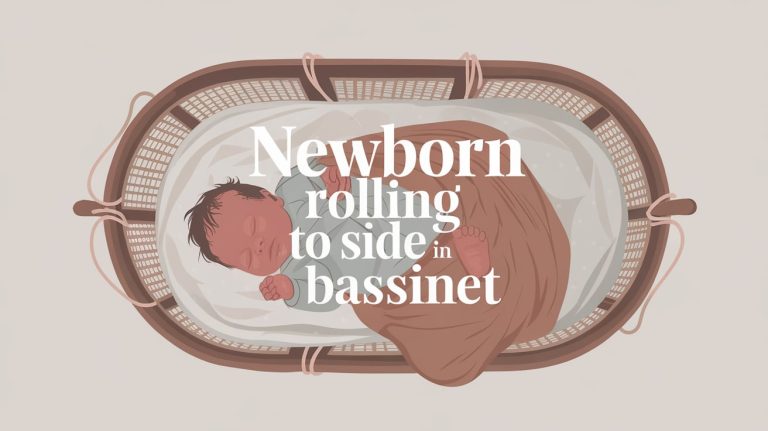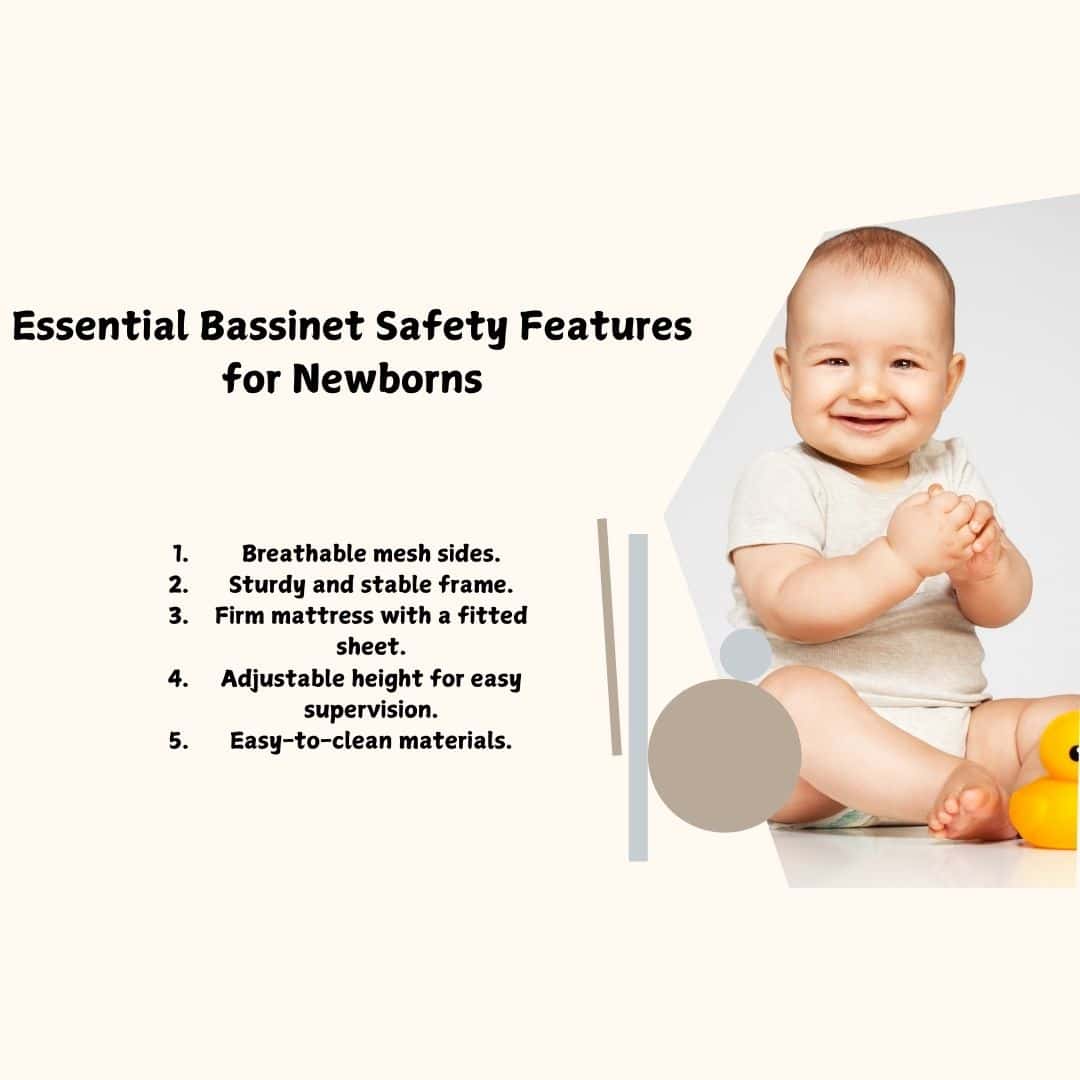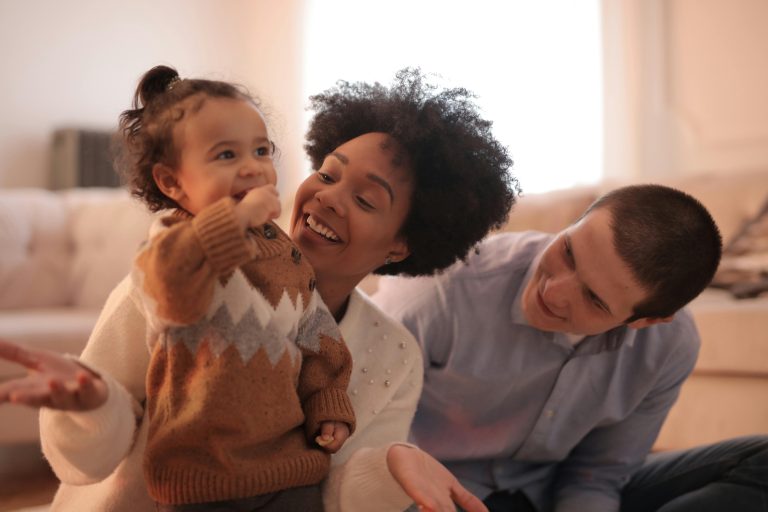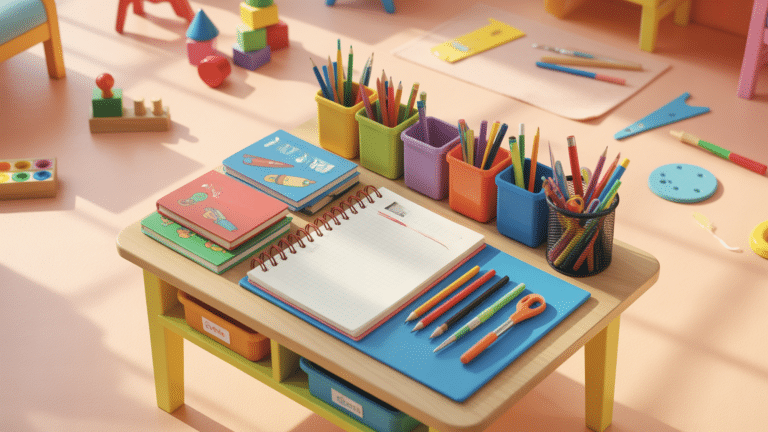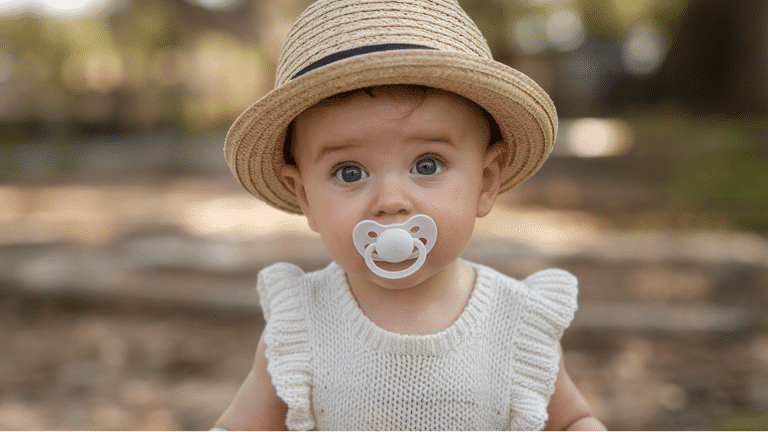Your baby’s first roll is an exciting moment, but it can also raise new concerns about sleep safety.
You might wonder what to do next when your little one starts moving in their bassinet.
Most babies begin rolling between 4 and 6 months old, and this new skill means it’s time to adjust their sleeping habits.
As a pediatric sleep consultant with 15 years of experience, I’ve helped thousands of parents handle this transition safely.
In this guide, you’ll learn:
- Clear signs your baby is ready to roll
- Simple steps to make bassinet sleep safer
- Expert tips for peaceful nights during this change
I’ll explain exactly what you need to know based on current safety guidelines and proven methods that work for real families.
Let’s help your baby sleep safely during this big change.
What is the Newborn Curl, and When Does it Occur?
The newborn curl is a natural position your baby takes in the first few months of life.
Think about how your little one looked in your belly – curled up, with their chin tucked and legs pulled in.
This same position continues after birth.
Why do babies curl up?
Your baby spent 9 months tucked snugly in your womb.
This curled position feels safe and familiar to them.
When you lay your baby down, you’ll notice:
- Their legs pull up toward their belly
- Their arms stay close to their chest
- Their back curves slightly
- Their head naturally turns to one side
This curling position is strongest in the first 2-3 months.
I often tell parents to watch how their baby moves during this time – it helps them spot when changes start happening.
When does the curl start to fade?
Around 3-4 months, your baby’s muscles get stronger.
You’ll see them stretch out more often.
Their legs kick with more force.
Their arms reach for toys.
These small changes show your baby is growing stronger and getting ready for new movements.
Remember: Each baby develops at their own pace.
Some might hold onto their curl longer, while others stretch out sooner.
Both are perfectly normal.
What Are Common Signs of Rolling?
Before your baby does its first full roll, it will show several signs of getting ready.
Let me share what to look for during playtime and sleep.
Early Signs During Tummy Time
- Head lifting higher than before
- Pushing up on arms with straight elbows
- Moving their head side to side
- Rocking back and forth
- One arm reaching while the other supports their weight
Movement Changes During Sleep
- Shifting to their side
- Wiggling more than usual
- Getting one arm out from the swaddle
- Turning head strongly to one side
- Moving legs up and over to the side
How to Tell if It’s On Purpose
Random rolls happen when babies startle or make sudden moves.
But planned rolls look different. Your baby will:
- Look in the direction they want to roll
- Make the same movements several times
- Show clear effort in their face
- Keep trying until they succeed
- Seem happy after rolling
I tell parents to watch for these signs around 3-4 months.
When you see three or more of these signs, your baby might roll soon, so it’s time to consider sleep safety changes.
Quick Tip: Write down when you notice these signs.
It helps you track your baby’s progress and know when to change their sleep space.
What Are the Risks of Newborns Rolling Over in Sleep?
When your baby starts rolling, their sleep safety needs to change.
As a sleep consultant, I’ve worked with many worried parents through this stage.
Let me explain the main risks and why we must take them seriously.
The Main Safety Concerns
- Breathing problems if baby rolls to their stomach
- Getting stuck in an unsafe position
- Higher risk of SIDS when on the stomach
- Possible suffocation from loose items in the sleep space
Why Back Sleep is Still Best
Medical experts agree that putting babies to sleep on their backs is safest.
Here’s why:
- Helps keep airways clear
- Makes it easier for babies to breathe
- Reduces the risk of overheating
- Let babies move their heads freely
What Happens If They Roll?
Once your baby can roll both ways (usually around 4-6 months), they might flip to their stomach during sleep.
While this can be scary to watch, a baby who can roll both ways:
- Has stronger neck muscles
- Can move their head to breathe
- Can change positions if uncomfortable
When Is It Safe for Babies to Sleep on Their Sides?
Let me be clear: Back sleeping is the only safe position until your baby reaches specific milestones.
I’ll help you understand exactly when side-sleeping becomes less risky.
Key Milestones Your Baby Needs
- Can roll from back to belly AND belly to back
- Has good head and neck control
- Can push up on arms with straight elbows
- Shows strong core strength
- Can free themselves when stuck
What Medical Experts Say
- Keep placing baby on their back until age 1
- Don’t use products that hold babies on their side
- Never place pillows or supports around the baby
- Stay with back sleeping even after rolling starts
When to Stop Adjusting Position
Around 6 months, many babies choose their sleep position.
You can let them stay on their side if:
- They got there on their own
- They move easily in both directions
- Their sleep space is clear of items
- They’re in a proper sleep sack
Safety Check: Even when your baby meets all these milestones, always put them to sleep on their back first.
Let them find their comfy position on their own.
What Should You Do if Your Newborn Rolls to the Side?
Finding your newborn on their side can be scary. I’ll show you exactly how to handle this situation calmly and safely.
Quick Steps When You Notice Side-Rolling
- Stay calm – your steady hands help keep the baby asleep
- Check if their face is clear and breathing is normal
- Move slowly to avoid startling them
- Place one hand on their hip, one on their shoulder
- Gently roll them to their back
Tips for Smooth Repositioning
- Use light pressure, not quick movements
- Keep your touch steady and warm
- Move their whole body, not just one part
- Watch their face for signs of waking
- Wait a moment before removing your hands
Make Sleep Space Safer
Put these steps in place to help prevent side-rolling:
- Remove all extra items from the sleeping area
- Check that the surface is firm and flat
- Make sure sheets fit snugly
- Use a sleep sack instead of loose blankets
- Keep the room at a good temperature
Night Check Routine
When you check on your baby:
- Listen for normal breathing
- Look at their skin color
- Make sure nothing blocks their face
- Fix their position if needed
Tips for Newborns Rolling to Their Sides Safely
1. Keep the Sleep Surface Firm and Flat
Your baby’s mattress should:
- Not dip when you press on it
- Return to shape quickly
- Fit snugly in the bassinet
- Have no gaps at the edges
- Stay level all night long
2. Clear Out the Sleep Space
The only things in the bassinet should be:
- Your baby
- A fitted sheet
- Their sleep sack
Take out all toys, blankets, and bumpers.
Even small items can cause problems when babies roll.
3. Start Every Sleep on the Back
Make back sleeping your rule:
- Place baby flat on their back
- Center them in the sleep space
- Keep their feet near the bottom
- Turn their head to one side
4. Pick the Right Sleep Sack
A good sleep sack will:
- Fit your baby’s size now
- Allow leg movement
- Keep arms free once rolling starts
- Close securely at shoulders
- Stay in place during movement
5. Check Your Baby Often
Set up a simple check routine:
- Look in before you sleep
- Listen for breathing sounds
- Check when you wake up
- Watch during daytime naps
- Notice any new movements
Quick Tip: Take photos of your safe sleep setup during the day.
This helps you spot anything out of place during night checks.
Essential Bassinet Safety Features for Newborns
1. Mesh Walls You Can See Through
Good mesh sides should:
- Let the air flow freely
- Let you see your baby clearly
- Have no large holes or tears
- Cover all four sides
2. Strong Base That Stays Put
A safe frame will:
- Not wobble when touched
- Have a wide, steady bottom
- Lock firmly in place
- Hold its shape when moved
3. Firm Mattress That Fits
Your mattress needs to:
- Feel hard when pressed
- Fit with no gaps
- Use only fitted sheets
- Stay flat when the baby moves
4. Height You Can Work With
The right height means:
- You can see your baby from your bed
- You won’t strain your back
- You can reach in easily
- You can check baby without getting up
5. Easy-Clean Materials
Look for surfaces that:
- Wipe clean with soap and water
- Don’t trap dirt or germs
- Dry quickly after cleaning
- Stay fresh with regular care
6. No Extra Padding
Skip any bassinet with:
- Built-in bumpers
- Thick side padding
- Pillowy materials
- Decorative frills
7. Safety Marks You Can Trust
Check for:
- ASTM safety stamp
- CPSC approval
- Current safety standards
- Recent manufacturing date
Conclusion
Your baby’s first rolls mark an exciting time in their growth.
By watching for early signs and following the basic steps I’ve covered, you can help your little one sleep safely through this stage.
Key points:
- Always start sleeping on the back
- Use a proper sleep sack
- Check your baby regularly
While this guide gives you the basics, your baby’s doctor knows your little one best.
Talk with them about any specific concerns you have.
Every baby develops differently, and that’s okay.
Trust your instincts, follow safety guidelines, and take it one day at a time.
Need more help?
Book a visit with your pediatrician to create a plan that works for your family.
Frequently Asked Questions
Why Do Newborns Roll More During Naps?
Newborns often move more during lighter sleep phases, such as naps.
Therefore, it’s essential to ensure a safe sleep environment at all times.
Can Tummy Time Help Prevent Rolling in the Bassinet?
Tummy time strengthens a baby’s neck and core muscles, helping with controlled movements.
It does not prevent rolling but promotes overall healthy motor development.
How Can You Tell If a Baby Is Ready to Roll?
Look for signs like increased head control, pushing up on arms, and shifting weight.
These indicate that rolling is a natural next step.

